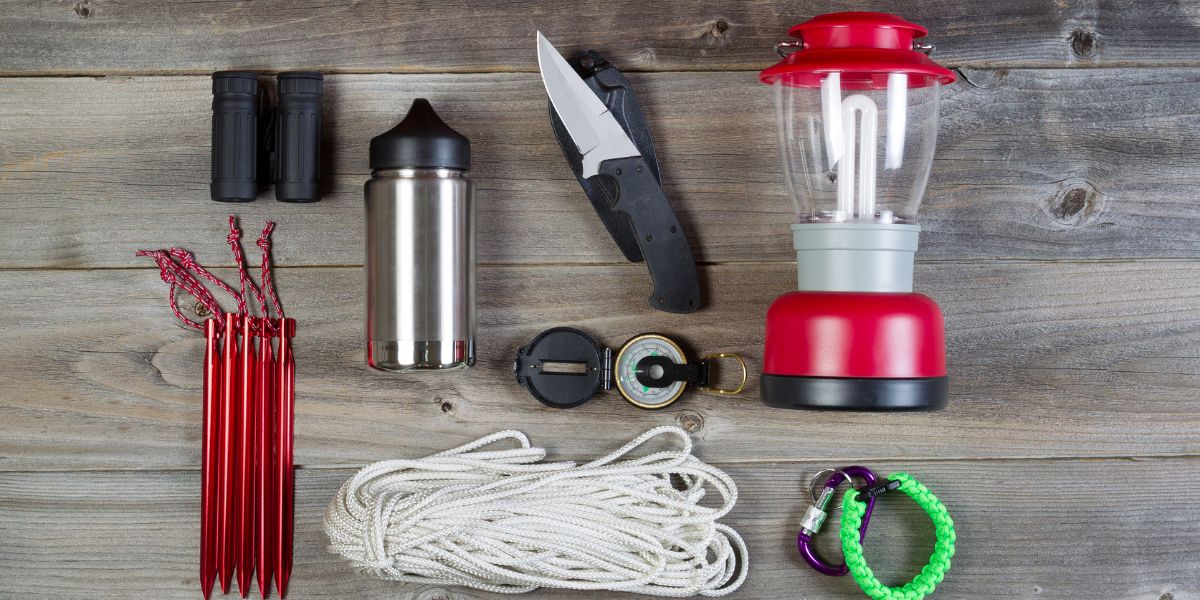
When you head out for a camping trip, choosing the right safety gear is crucial. You'll need to consider your planned activities and the environment you'll be in. Essential items like sturdy boots or a first aid kit can make all the difference. But it doesn't stop there; comfort and durability matter too. Let's explore what you really need to keep safe and enjoy your outdoor adventure.
Assessing Your Camping Environment
Before you pack your gear, it's crucial to assess your camping environment to ensure your safety.
Start by researching the area where you'll be camping. Check the weather forecast, as conditions can change rapidly. Look for potential hazards, like steep cliffs, swift rivers, or wildlife activity.
Familiarize yourself with local flora and fauna; some plants and animals can pose risks. If you're camping in a remote area, consider your access to emergency services.
Assess the terrain for any obstacles that might affect your mobility, especially if you'll be hiking. Lastly, ensure you have maps and GPS devices to navigate effectively.
Essential Safety Gear for Different Activities
Once you've assessed your camping environment, it's time to think about the safety gear you'll need for various activities.
If you plan to hike, sturdy boots, a first aid kit, and a whistle are essential.
For fishing, don't forget a personal flotation device and sun protection.
When setting up a campfire, use gloves and a fire extinguisher to stay safe.
If you're biking, wear a helmet and knee pads to protect yourself from falls.
For climbing, invest in a harness, carabiners, and a crash pad.
Each activity comes with its own risks, so tailor your gear accordingly.
Proper safety equipment can make your camping experience enjoyable while keeping you protected from potential hazards.
Prioritizing Comfort and Durability
While selecting safety gear for camping, it's crucial to prioritize both comfort and durability to ensure an enjoyable experience. Comfortable gear allows you to focus on enjoying nature rather than being distracted by discomfort.
Look for items that fit well and don't restrict movement, like adjustable harnesses or cushioned footwear. Durable materials, such as reinforced nylon or waterproof fabrics, offer protection against the elements and wear and tear.
When gear can withstand rough conditions, you avoid frequent replacements, saving time and money. Don't forget to consider the weight of the gear—lighter options can enhance mobility without sacrificing safety.
Ultimately, finding the right balance between comfort and durability will enhance your camping adventures and keep you safe in the wild.
Tips for Proper Maintenance and Storage
To keep your camping gear in top shape, regular maintenance and proper storage are essential.
After each trip, clean your gear thoroughly to remove dirt and moisture. Allow everything to dry completely before storing it to prevent mold and mildew.
Check for any damages, like tears or broken straps, and repair or replace items as needed.
Store your gear in a cool, dry place, away from direct sunlight, which can degrade materials over time.
Use containers or bags to keep everything organized and easy to find. Labeling your storage helps you grab what you need quickly when it's time to head out.
With these simple steps, your safety gear will be ready for your next adventure!
Conclusion
Choosing the right safety gear for camping is crucial for a successful trip. By assessing your environment and understanding the specific activities you'll engage in, you can select gear that meets your needs. Prioritizing comfort and durability ensures you'll stay protected and enjoy your adventure. Don't forget to maintain and store your gear properly to extend its life. With the right preparation, you'll be ready to tackle any camping challenge while staying safe and secure.
Trending Products














